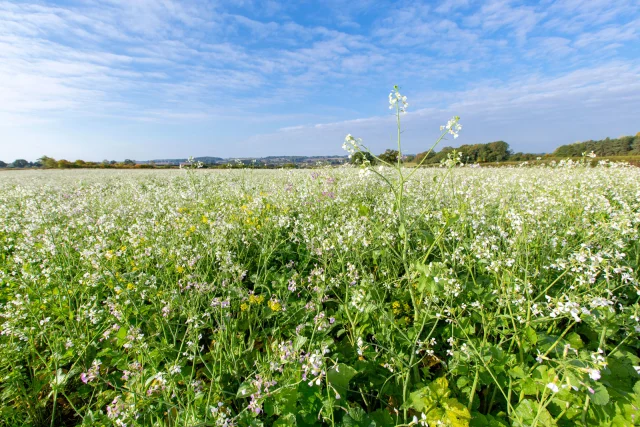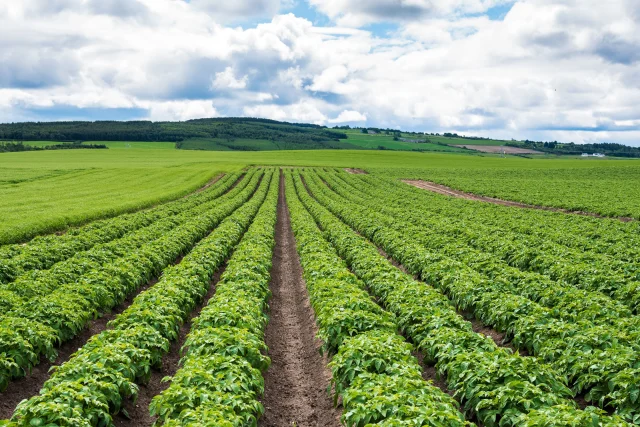Published on 2nd April 2020
Pest Management
How to integrate biologicals with conventional insecticides for season-long protection of field vegetables

The mild winter has been a boon for all pests, but especially aphids. With flights several weeks earlier than in a typical season, growers and their advisers are expecting to see aphids in crops from the end of April.
Such high pressure means growers will need to give careful thought as to how they structure programmes if they are to retain the products offering the best protection for when the threat is greatest.
A lesson from the 2019 season is that despite aphid populations being only a third to half of what might be considered normal (depending on species), Turnip Yellows Virus (TuYV) were greater than anticipated. The effect of this has been to remind growers that module treatments are the best means of protecting crops in the early stages of the season.
Between 2006 and 2018 brassica growers came to rely on neonicotinoid seed treatments, first it was imidacloprid and then thiamethoxam which provided effective control of TuYV.
TuYV infections are symptomless but can cause significant yield reductions of up to 60% in long season crops such as Brussels sprouts and storage cabbage.
As well as reducing yield, TuYV can cause internal breakdown in stored cabbage. Internal breakdown was a significant issue in storage cabbage crops prior to 2006, with crops in 2003 badly affected after a long, hot summer.
Since 2006 storage cabbage growers have largely forgotten about the issue, which increases in severity the longer cabbage is stored. However, we are already seeing significant issues this year with losses of up to 20% in some stores.
The importance of a structured programme
The insecticidal products we have can be separated into two categories: life-cycle breakers and knock downs. Using life-cycle breakers at crucial points in the season relieved much of the pressure and ensured the knock downs could be deployed only when numbers reached the point that populations became a problem.
Growers will need to follow a similar strategy again this year, but the loss of certain products will focus thoughts on when, what, and how best to use the remaining products for effective protection.
What separates the 2020 season from those that went before it is the loss of Plenum (pymetrozine), the last season of use for Biscaya (thiacloprid) and the introduction of FLiPPER, a novel biological insecticide containing carboxylic acids derived from the production of extra virgin olive oil.
FLiPPER has the potential to play a greater role than has been seen with other biocontrol agents. Understanding how to use it for greatest effect will be central to achieving good control.
Cabbage root fly larvae
Cabbage root fly are a threat to production for most of the planting season and growers have limited options. Both Verimark (cyantraniliprole) and Tracer (spinosad) can be applied at the module stage as a pre-planting drench.
Minecto One (cyantraniliprole) can also be applied as a foliar application for the control of caterpillars though it should be noted that using Verimark as a drench precludes the use of Minecto One as a foliar spray due to label restrictions.
Using Tracer at pre-planting has the advantage of leaving two foliar sprays of Minecto One which may give some aphid control should growers already have used their two applications of Movento or two sprays of Biscaya.
Two further foliar applications of Tracer can also be used up until three days before harvest (in outdoor crops) and resistance has so far only been found in some populations of onion thrips. Similarly, there is no evidence of resistance to spirotetramat (Movento) among UK populations of the peach-potato aphid (Myzus persicae).
Foliar aphid control options
Hopes that the EAMU for Teppeki (flonicamid) for aphid control in cabbage gained in December 2018 would be extended to include Brussels sprouts in time for the coming season are yet to be realised at the time of writing this article. This currently leaves just Biscaya and Movento for aphid control in most crops while Insyst (acetamiprid) has an EAMU for aphid control in Brussels sprouts.
With vast majority of the peach-potato aphid population demonstrating some resistance to pyrethroid (KDR/super-KDR) and pirimicarb (MACE), and similarly high resistance to pyrethroids in the diamond-back moth, cabbage whitefly and onion thrips, it makes sense to consider biological insecticides such as FLiPPER as alternatives to these substances in a programme.
Growers will need to follow a similar strategy again this year, but the loss of certain products will focus thoughts on when, what, and how best to use the remaining products for effective protection.
What separates the 2020 season from those that went before it is the loss of Plenum (pymetrozine), the last season of use for Biscaya (thiacloprid) and the introduction of FLiPPER, a novel biological insecticide containing carboxylic acids derived from the production of extra virgin olive oil.
FLiPPER has the potential to play a greater role than has been seen with other biocontrol agents. Understanding how to use it for greatest effect will be central to achieving good control.
Cabbage root fly larvae
Cabbage root fly are a threat to production for most of the planting season and growers have limited options. Both Verimark (cyantraniliprole) and Tracer (spinosad) can be applied at the module stage as a pre-planting drench.
Minecto One (cyantraniliprole) can also be applied as a foliar application for the control of caterpillars though it should be noted that using Verimark as a drench precludes the use of Minecto One as a foliar spray due to label restrictions.
Using Tracer at pre-planting has the advantage of leaving two foliar sprays of Minecto One which may give some aphid control should growers already have used their two applications of Movento or two sprays of Biscaya.
Two further foliar applications of Tracer can also be used up until three days before harvest (in outdoor crops) and resistance has so far only been found in some populations of onion thrips. Similarly, there is no evidence of resistance to spirotetramat (Movento) among UK populations of the peach-potato aphid (Myzus persicae).
Foliar aphid control options
Hopes that the EAMU for Teppeki (flonicamid) for aphid control in cabbage gained in December 2018 would be extended to include Brussels sprouts in time for the coming season are yet to be realised at the time of writing this article. This currently leaves just Biscaya and Movento for aphid control in most crops while Insyst (acetamiprid) has an EAMU for aphid control in Brussels sprouts.
With vast majority of the peach-potato aphid population demonstrating some resistance to pyrethroid (KDR/super-KDR) and pirimicarb (MACE), and similarly high resistance to pyrethroids in the diamond-back moth, cabbage whitefly and onion thrips, it makes sense to consider biological insecticides such as FLiPPER as alternatives to these substances in a programme.
This will require high water volumes, typically in the region of 400 litres/ha, and may involve modifying equipment to ensure appropriate application.
This is one reason why it is best used in a programme alongside conventional products.
Cabbage internal tipburn caused by TuYV infection
The extracted tip of a cabbage heart infected with TuYV



